Bibingkang Galapong- Filipino Rice Cakes with Butter and Cheese in Banana Leaves
As an Amazon Associate and member of other affiliate programs, I earn from qualifying purchases.
Even if I have lived away from the Philippines for a long time, I yearn for the old favorites I grew up with like the Bibingkang Galapong, Filipino Rice Cakes with Butter and Cheese in Banana Leaves. When I long for my homeland at Christmas, I start cooking and baking classic recipes. These bibingkas, rice cakes baked in a mini version are an example.
The bibingka (say ‘bee-bing-kah’) is a Filipino rice cake, a favorite during the holidays for Filipinos. They are traditional rice cakes baked with eggs, butter and cheese. And always, they are best when baked in banana leaves. In my childhood home, if mom needed banana leaves for cooking, all that was needed was for anyone in the household to grab the yard-long ribbed leaves from the backyard trees. I can’t do that here in the States. I live in a suburban neighborhood which has maple and oak trees and with no banana foliage in sight. So I head over to the Asian grocery and buy a pack of frozen banana leaves.
It is the whiff of burnt leaves mingling with the aroma of sweet coconut, roasting on a char-grill that sends me in a spin. There is that earthy, grassy, herb-like appeal from cooking with leaves that makes my head turn. Cooking with banana leaves enhances the aroma of any dish or dessert. Tuck in the edges and flute them like I did here. Bake or char-grill them with the batter that’s rich with coconut. The results are irresistible.
To add a Filipino touch to the table setting, I placed the mini bibingkas on what looked like a large platter. This is a plate charger made of resin which has cut up banana leaves embedded in its design. These plate chargers were made in Silay city and a gift from cousins in the Philippines. I arranged the mini bibingkas on it, careful not to tear up the delicate, wispy, leaf edges around the small cakes. I set this platter arrangement on top of a large banana leaf which served as a decorative table runner for the buttery rice treats.
I reached for one muffin-sized bibingka, which was warm, soft and moist. It had a delightful sponge cake texture. I slathered on a silky dab of butter and swiftly took a forkful. The rich rice cake did not disappoint. Immediately, I was transported back to Christmases of my childhood.
Bibingkang Galapong - Filipino Rice Cakes with Butter and Cheese in Banana Leaves
Equipment
- Large muffin tins
- Or: Large Pie Plate (oven-proof) 9 inches diameter or larger
Ingredients
- 1 3/4 cups malagkit (sweet rice) soaked in water overnight
- 1 1/2 cups galapong (rice batter) obtained from soaking sweet rice - see procedure below
- 11/4 cups all purpose flour
- 1 Tablespoon baking powder
- 1/2 teaspoon salt
- 4 whole large eggs yolks and whites separated
- 3/4 cup coconut milk canned or fresh
- 1/4 cup whole milk
- 1 whole salted egg peeled, sliced for topping the cake
- 1/2 cup grated Gouda cheese
- 1/2 cup crumbled Feta cheese
- 4 Tablespoons melted unsalted butter for brushing on bibingka cakes
- 2 large whole pieces banana leaves cut to fit the individual muffin pans
- 1/2 cup softened unsalted butter ) to line the banana leaves
- 1/4 cup fresh coconut meat slivers for garnish on top of bibingkas (or use dessicated coconut if fresh is not available)
- 1/4 cup granulated sugar divided, use 2 Tablespoons to sprinkle on cake
Instructions
- To make the galapong: Rinse the rice under cold running water, drain and place in a medium bowl with cold water to cover. Refrigerate overnight.The next day: Drain and rinse rice again. Then drain in a colander. Transfer to a food processor. Process until the mixture is finely grounded about 1 minute. Then work again to press the galapong through the sieve. You should have about 1 and 1/2 cups galapong, finely processed rice batter. Discard any extra.
- To make the bibingka: Prehat the oven to 425 F degrees. Prepare two sets of muffin pans, large sized, about 3-inches in diameter. Line each cup with cut-up banana leaves, about 3 x 8 inches each, to fit the shape of the pans. Grease the banana leaves with softened butter.
- In a large bowl, combine the flour, 1/4 cup sugar, baking powder and salt in a bowl. Add the galapong. Mix well so that no more lumps remain. Stir in egg yolks, coconut milk and regular milk.
- Separately, in the clean large bowl of an electric mixer fitted with a whisk attachment, beat the egg whites till stiff. Beat for about 5 minutes. Fold the whites into the galapong mixture.
- Divide the mixture between the lined muffin pans. Nestle a slice of salted egg into the middle of each cup. Sprinkle each cup with a teaspoon of the Gouda, and a teaspoon of the Feta. Lastly, sprinkle the tops with 1/2 teaspoon of the sugar.
- Set the bibingka muffin pans on the top rack of the oven and bake until firm, for about 15 to 20 minutes. It should be lightly browned on top. If the bibingkas are firm but not browned, preheat the broiler and broil them 5 to 6 inches from the heat source. Keep an eye on the bibingkas till light brown, which will take about 3 minutes.
- Take the bibingkas out of the oven. Brush the bibingka with the melted butter while still warm. Let cool slightly and serve straight from the banana-leaf lined pans. Sprinkle coconut meat slivers (or dessicated coconut) on top of each bibingka as garnish.
- Cook's comments: A regular banana leaf is about 24 to 30 inches in length, and about 8 to 10 inches wide. Whether using frozen or fresh off the tree, wash leaves thoroughly with soap and water, then rinse well before using.*You can also bake this recipe in one large pie plate (9 inches diameter). Line with banana leaves and grease with butter as directed in the procedure.
- Ingredient notes: Salted eggs are available in Asian or Filipino supermarkets. In Filipino stores, the egg shells are dyed a magenta red hue to differentiate it from regular eggs. In the Philippines, the cheese used for topping is called 'kesong puti', which has a soft texture and very salty flavor. The closest substitutes for the cheeses in this recipe are Gouda and Feta cheese. Or if Feta is not available, I often use goat cheese. For butter, I use Kerrygold USA brands for this recipe (Note: This is not an ad. My views are my own).
Copyright Notice: Hello, Friends! All the images and content here are COPYRIGHT PROTECTED. This means BY LAW you are NOT allowed to use my photos or content on your website without my permission. If you want to republish this recipe, please re-write it in your own words and simply link back to this blog to give proper attribution. It’s the legal thing to do. Thank you.
Nutrition
Nutrition Notes: The nutrition information provided is an estimate and will vary based on cooking or baking methods and brands of ingredients used.
Did you love this recipe? I have more Philippine dessert recipes in my popular cookbook How to Cook Philippine Desserts, Cakes and Snacks.
If you need Filipino Instant Pot recipes, find more in my newest cookbook Instant Filipino Recipes: My Mother’s Traditional Philippine Cooking in A Multicooker Pot. Buy my cookbooks and books on Amazon.com sold worldwide in paperback and Kindle format.
Copyright Notice: Hello, Friends! Please DO NOT LIFT OR PLAGIARIZE my original recipe, stories, photos or videos. All the images and content on this blog are COPYRIGHT PROTECTED and owned by my media company Besa-Quirino LLC. This means BY LAW you are NOT allowed to copy, scrape, lift, frame, plagiarize or use my photos, essays, stories and recipe content on your websites, books, films, television shows, videos, without my permission. If you wish to republish this recipe or content on media outlets mentioned above, please ASK MY PERMISSION, or re-write it in your own words and link back to my blog AsianInAmericaMag.com to give proper attribution. It is the legal thing to do. Thank you. Email me at [email protected]

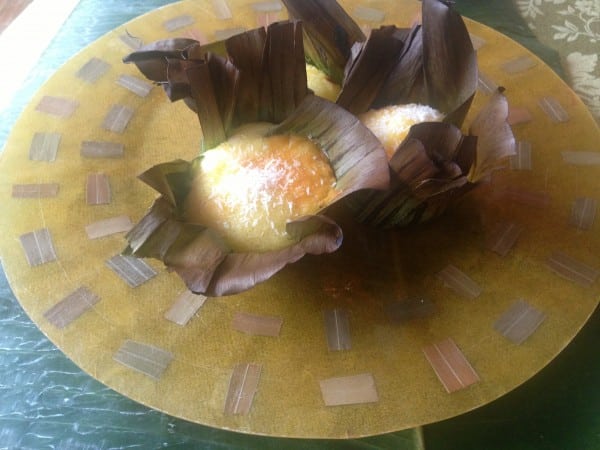
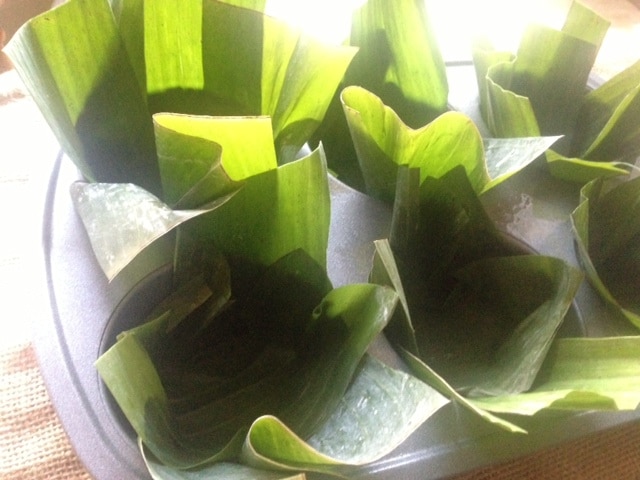
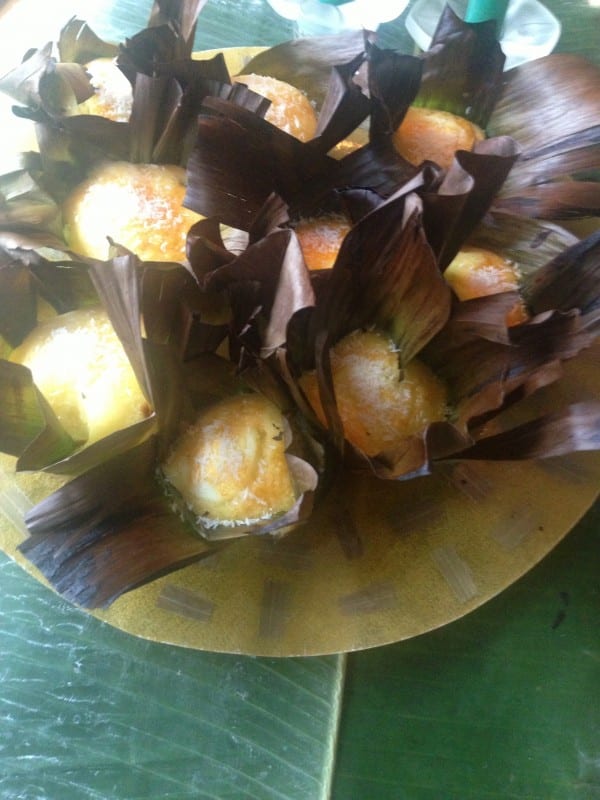
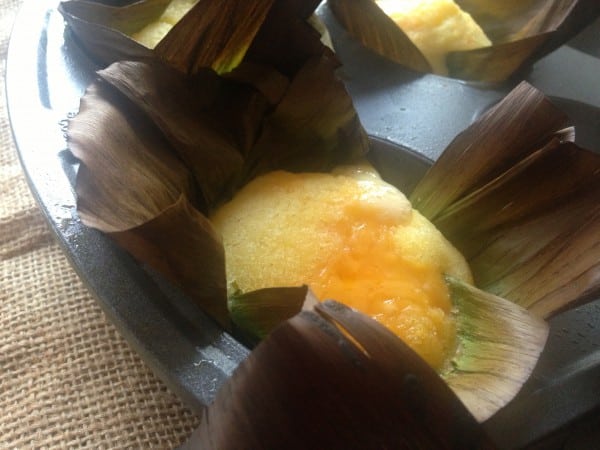
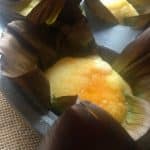
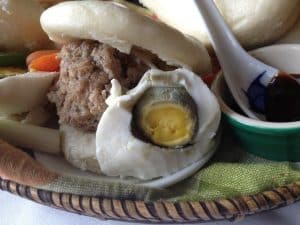
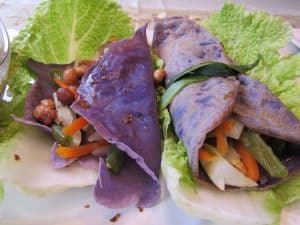
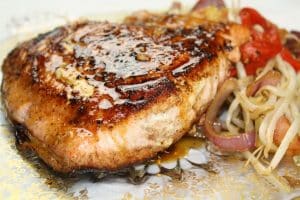
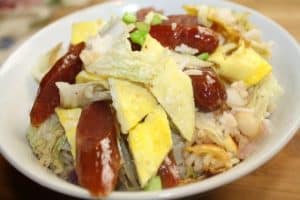
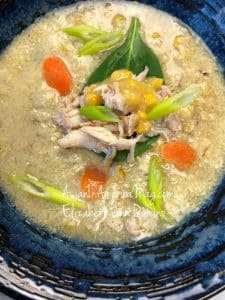
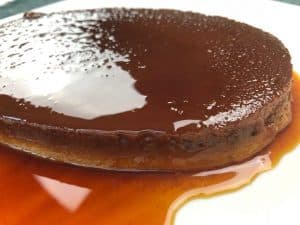
Love it! I have never seen anything like these. Wow. One day I will give these a try, they look and sound delicious and SO interesting. Thanks for sharing x
Thanks, Lisa. You’ll enjoy making these. So easy to do. I can share more photos later of how to make the rice batter. Enjoyed doing #LetsLunch with you. Happy Holidays 🙂
I always love reading about these Filipino traditions; such an interesting departure from what I grew up with. These look great!
Thanks, Annabelle. Hope you get to try making these bibingkas. These was a great recipe to showcase the flavors and the pretty leaves. Happy holidays 🙂
Bibingka brings back many memories for most Filipinos like simbang gabi. I can almost smell the beautiful aroma of bibingka from this post. Happy Holidays to you and your loved ones Elizabeth! 🙂
Thanks, Chef Ray! Agree with you ~ nothing else brings back memories like a good slice of bibingka. Happy Holidays to you and your family, Chef Ray 🙂
I love how they look like wintry flowers. *Delicious* wintry flowers.
Thanks, I love how you called these ‘wintry flowers’. Glad to do #LetsLunch with you. Happy Holidays!
Beautiful! Happy holidays!
Thanks, Linda! #LetsLunch was fun. Happy holidays, too 🙂
I love these! Elegant and I love knowing the meaning and reading about your memories and the presentation on the beautiful harmonizing plate. You always take me on a grand journey. All good wishes to you and your dear ones.
Thanks, Nancie ! Your kind wishes are always so heartwarming. What an honor to have you visit my blog. Glad you like the bibingka recipe on banana leaves and the story that came with it. Wishes for a wonderful holiday season to you and your family as well.
Sarap neto, lalo na at 5am in the morning
Hi Raymund ~ maraming salamat! Maligayang Pasko at Manigong Bagong Taon 🙂
Yum, must be delicious with banana leaves wrapped around the rice cake!
Thanks, Nami. When the bibingka rice cake is baked and broiled in the banana leaves, the aroma is superb 🙂
Thanks, Nami. When the bibingka rice cake is baked and broiled in the banana leaves, the aroma is superb 🙂
The banana leaves add a delicious and unique flavor to foods, so I am sure it is a delicacy.
Thanks, Mari. The banana leaves give off such an earthy, flavor-filled aroma. Glad you stopped by 🙂
Dear Ms Q,
This bibingka is worth to try. Can I use powdered glutinous rice instead? What is “galapong”?.
Sincerely,
Rose F
Hi Rose! Thanks for the blog-visit. “Galapong” is rice batter. As I explained on the blog post here and others on this website, here’s how to make galapong : pre-soak the (uncooked) sticky rice grains in water the night before . The following day, the grains will plump up. Use a blender or food processor – place the sticky rice grains and process till it has a fine, nearly powdery consistency. This is the galapong. You can then add it to the rest of the ingredients listed in this recipe and cook according to the directions. I have never used powdered glutinous rice before to make bibingka, so I can’t tell you if it is a good substitute. Here is a previous blog post of mine which has photos of how to make galapong. Good luck and let me know how it turns out. https://thequirinokitchen.com/2012/07/outdoor-grillingfilipino-rice-cakes-with-coconut-banana-leaves-sundaysupper/